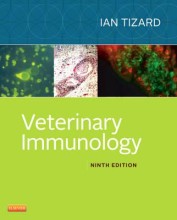Microbial Disease Mechanisms Summary
- This + 400k other summaries
- A unique study and practice tool
- Never study anything twice again
- Get the grades you hope for
- 100% sure, 100% understanding
Read the summary and the most important questions on Microbial disease mechanisms summary
-
1 Introduction
This is a preview. There are 7 more flashcards available for chapter 1
Show more cards here -
What are indigenous microbiota?
The bacteria that are consistently associated with the body surfaces of animals. -
What determines an infectious disease?
- Route of entry
- Number of bacteria
- Status of the host's defences -
What are virulence determinants?
The sum of characteristics that allow a bacterium to produce a disease.
- Some pathogens rely on a single virulence determinant, other have multiple and produce a wider range of diseases -
Invasiveness is the ability of a pathogen to invade tissues. It includes:
- Mechanisms for colonisation (adherence and initial multiplication)
- Production of extracellular substances, invasins, that promote tissue invasion
- Ability to bypass the host defence mechanisms -
2 Structure and function of bacterial cells
This is a preview. There are 34 more flashcards available for chapter 2
Show more cards here -
Prokaryotic structural components consist of....
- Macromoluecules such as DNA, RNA, proteins, polysaccharides and phospholidids
- Are made up of primary subunits, in the primary structure, which determines the function of the molecule -
The flagellar apparatus consist of several distinct proteins, which?
- A system of rings embedded in the cell envelope (basal body)
- The innermost M and S rings are the motor apparatus, located in the plasma membrane
- The outermost P and L rings function are support for the rod, located in the periplasm and outer membrane
- When the M ring turns, the rotary motion is started
- A hook-like structure near the cell surface
- The flagellar filament
- A system of rings embedded in the cell envelope (basal body)
-
How was it proven that flagella gives motality to bacterium?
By taking them off and seeing that the cell was still viable ut not moving anymore. When flagella were restored, so was motility -
How do flagella grow?
At the tip by deposition of new units, not at the base -
What is a motility test medium?
A semi-solid medium that gets inoculated with bacteria in a straight line. If the line becomes cloudy, the bacteria inside will have moved through the medium. -
What is the last method to prove motility by flagella?
Microscopic observation
- Higher grades + faster learning
- Never study anything twice
- 100% sure, 100% understanding






























